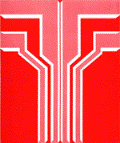Nebraska Academy of Sciences
Date of this Version
Spring 4-18-2025
Document Type
Article
Citation
Transactions of the Nebraska Academy of Sciences 45 (2025), 6–22
Abstract
A major threat to grasslands around the world is the spread of exotic cool-season grasses (ECSG). ECSG dominate vegetative communities and degrade critical habitats. One of the most common methods to treat ECSG is herbicide. To compare how the widely-used, non-specific herbicide glyphosate compared to the grass-specific herbicide clethodim, we conducted a fall spray in November 2023 at two different sites located in the Central Platte River Valley of Nebraska. The following June, we used a modified Daubenmire frame sampling method to gather data on relative cover, species richness, and community composition. After analysis, glyphosate appeared to be more effective than clethodim at treating ECSG. Glyphosate is less expensive, resulted in greater relative coverage of native species, showed comparable species richness, and had lower relative coverage of ECSG. However, its negative impact on Carex sp. cover may be of concern to some managers. In these cases, clethodim may be a better choice, as recent literature suggests it has minimal impact on sedges. Future research should focus on comparing the effects of multiple treatments occurring at various times in the year and incorporating seeding strategies on both a larger time scale and on larger test plots.
DOI: 10.32873/unl.dc.tnas.45.2


Comments
Copyright © 2025 Eleanor J. Muzzy, Joshua D. Wiese, and Abraham J. Kanz